The northern lights, or aurora borealis, can be seen throughout the polar north, but the most vivid displays occur under an oval-shaped ring, the aurora oval, that circles the magnetic North Pole.
The aurora oval stretches across northern parts of Alaska, Canada and Greenland, as well as over Iceland, northern Scandinavia (Norway, Sweden and Finland), and parts of Russia. Within the oval, solar particles interact with the Earth’s magnetic field, creating the vibrant aurora borealis displays.
Witness the Aurora Borealis in Churchill, Manitoba
Churchill, Manitoba, sits within the aurora oval on Hudson Bay and at the mouth of the Churchill River. Nat Hab’s Northern Lights Photo Expedition in Churchill offers an exclusive opportunity to photograph this elusive light display, alongside the snowy landscapes and wildlife that define Churchill. With expert photography guides, you’ll capture unforgettable images of the aurora far from city lights, beneath the vast arctic skies.
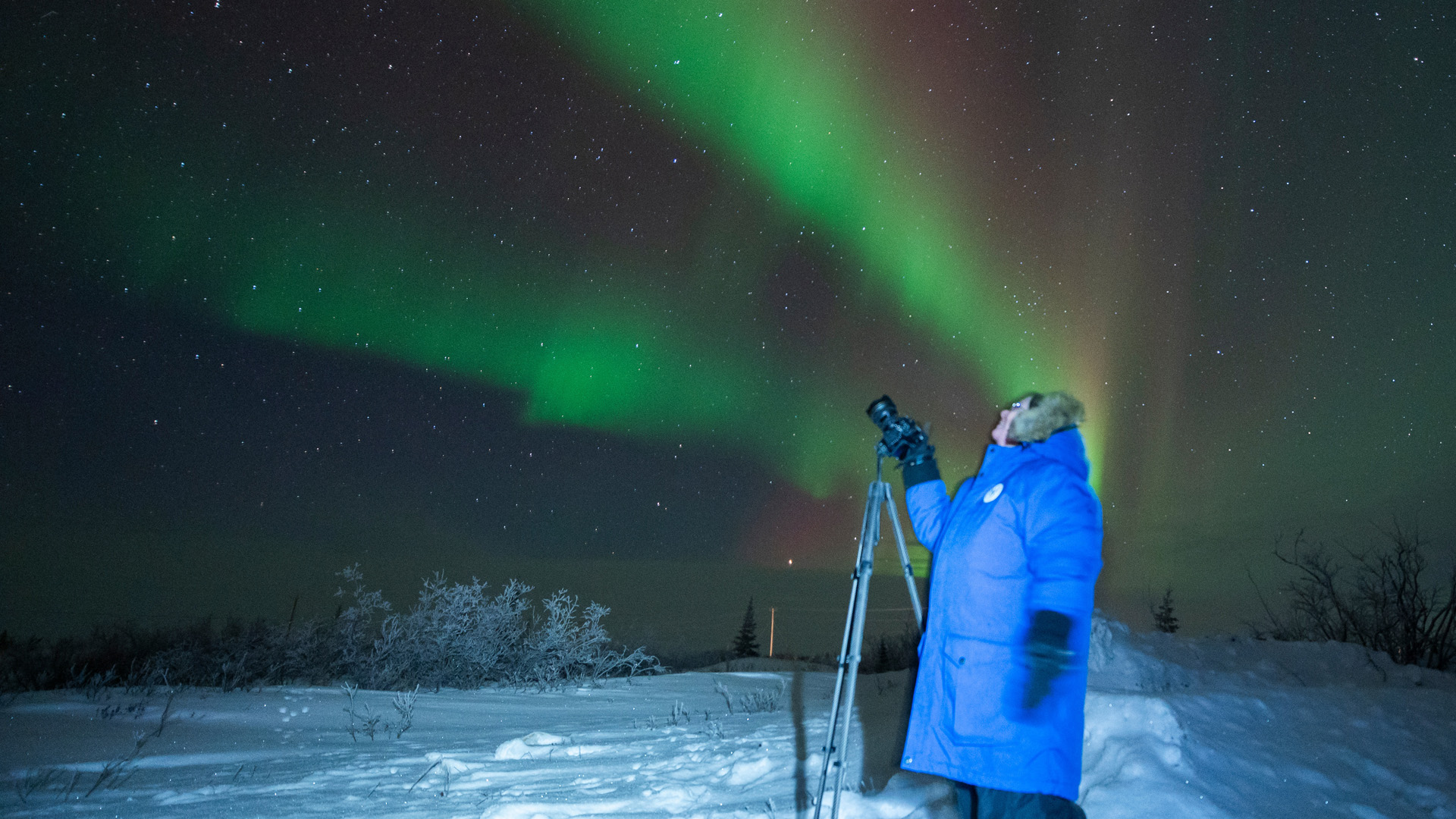
Photographed by Nat Hab Expedition Leader © Eddy Savage
Nat Hab Expedition Leader and Chief Sustainability Officer Court Whelan says, “We are in a beautiful location in Churchill, Manitoba, what I view as one of the best places for aurora viewing and, of course, aurora photography in the entire world.”
We’ve assembled numerous tips, stories and guides for getting great shots of the northern lights. You can see many of those here. In this article, we combine them for six iconic shots to aim for on your Northern Lights & Arctic Exploration Adventure.
Just as a commercial photographer has a shot list for the images to capture during a work day, so too you might want to think before your arrival about the kinds of images you want to be able to return home with.
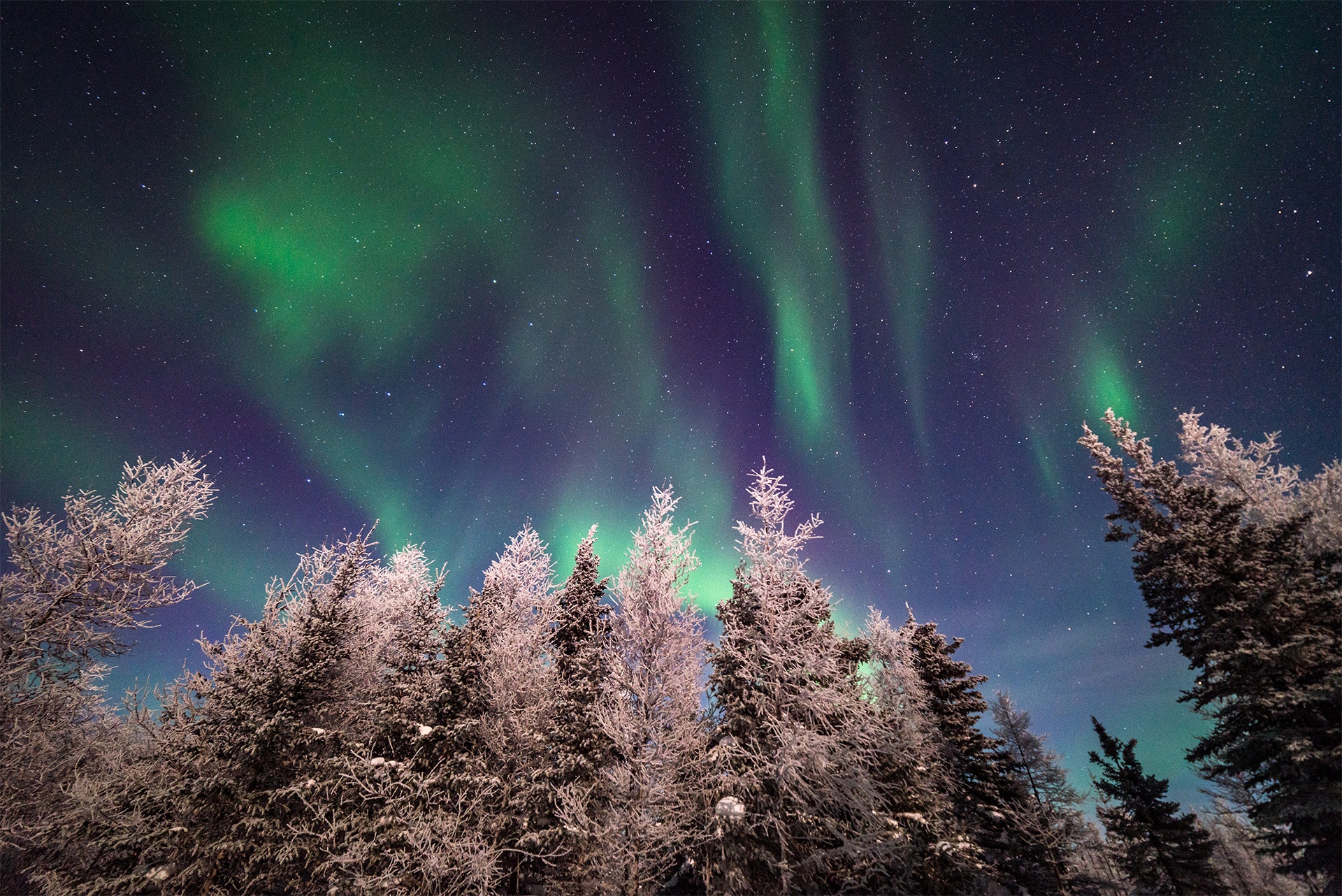
© Eddy Savage
Here are six iconic shots to aim for on your Northern Lights Photo Expedition in Churchill:
#1: Photograph the Northern Lights Over Boreal Forest
Court says, “We’re in a beautiful part of Churchill, which is the boreal forest. One of the most known and revered things about Churchill is its confluence of these major biomes. We’ve got the tundra, the arctic tundra, just a little further out there, but right now, we’re tucked in this beautiful boreal forest. So we see these incredible black and white spruce trees all around us. This is the ideal thing for foreground elements in aurora photography.”
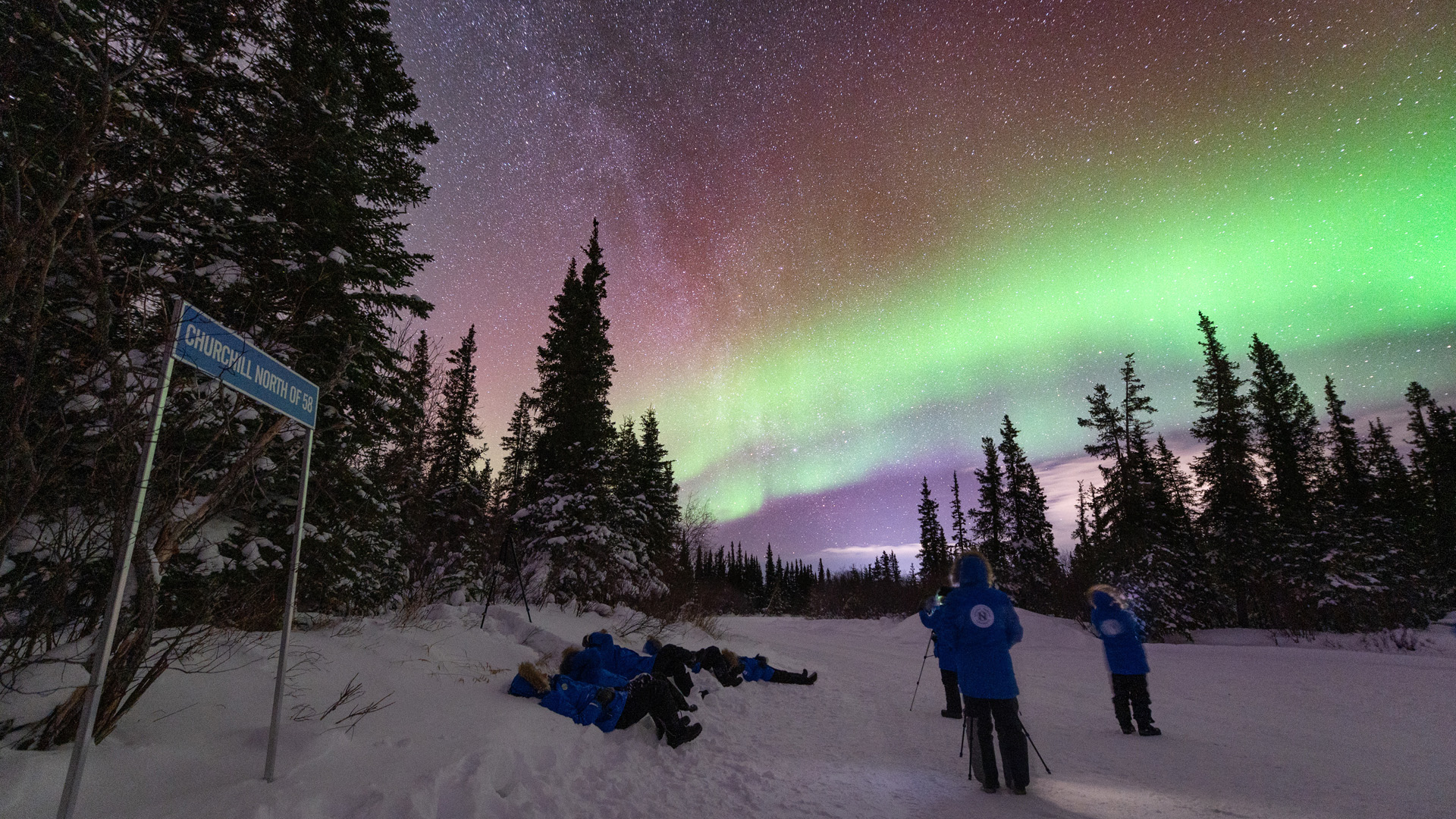
Nat Hab Expedition Leader © Eddy Savage
Churchill’s boreal forest provides an ideal foreground for photographing the northern lights. The stark beauty of snow-covered black and white spruce trees adds depth and context to your images of the aurora borealis, making it more than just a “green swash across the sky.”
The clear, dark skies, far from any light pollution, make Churchill a prime location for capturing the stunning natural display of the aurora.
For your first iconic shot, focus on the northern lights illuminating the sky over the snow-covered spruce trees of the boreal forest. Use a wide-angle lens to capture the full scope of the lights as they ripple and dance above the trees. A long exposure will bring out the vivid greens, purples and blues of the aurora while maintaining the contrast of the dark, snow-draped trees below.
Nat Hab Expedition Leader Court Whelan emphasizes the importance of including foreground elements in aurora photography: “Without some sort of context like a foreground—some snow, some trees, a building or an igloo—it’s going to look a little uninviting and not that interesting.”
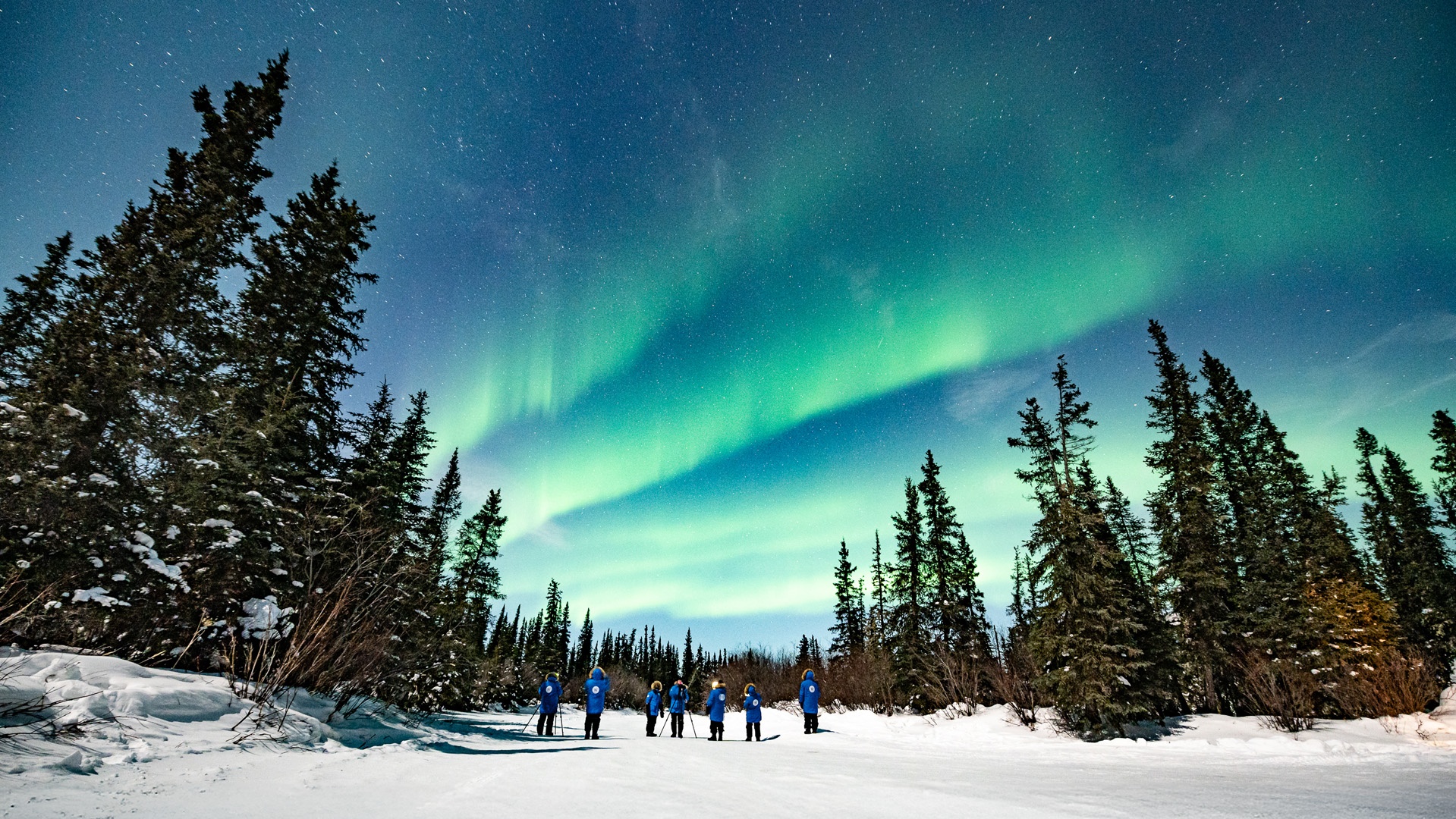
Nat Hab Expedition Leader © Eddy Savage
Trees in the foreground help in multiple ways:
- They provide context for the larger story and sense of place.
- They give us something to focus on.
Tip: “One of the most challenging things about aurora photography is where and how to focus.” Framing the lights with the towering trees adds context and enhances your composition, transforming the shot into a captivating scene.
Resource: For more on choosing the right foreground for your northern lights photography, check out Court Whelan’s blog post: How to Pick Your Foreground for Northern Lights Photography.
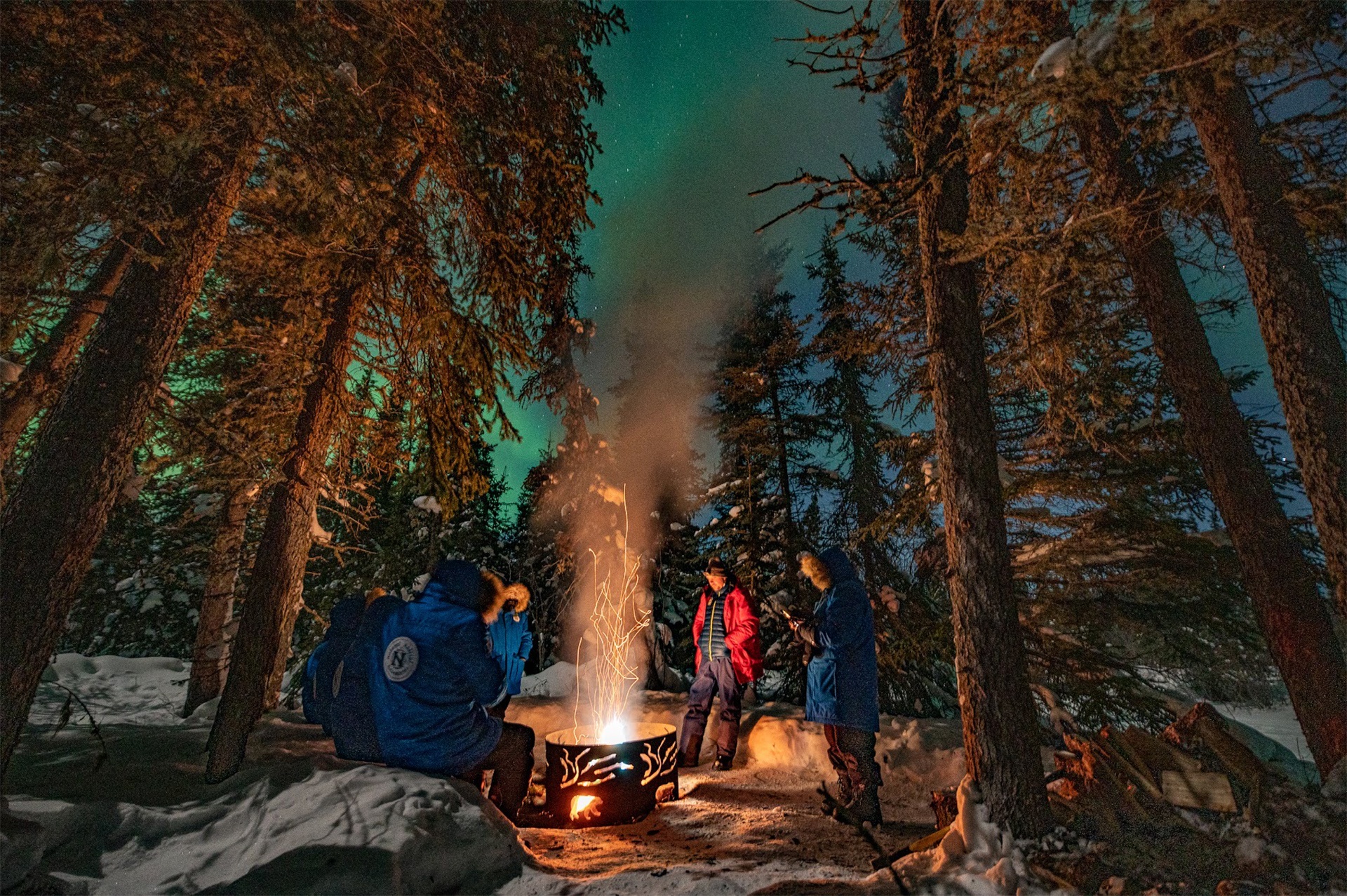
Nat Hab Expedition Leader © Eddy Savage
#2: Reflections of the Northern Lights on Ice
The frozen landscape of Churchill provides a perfect reflective canvas for the northern lights. The ice-covered terrain creates stunning reflections of the vibrant aurora borealis, adding an extra layer of visual interest to your shots. This pristine wilderness setting in northern Manitoba offers some of the clearest views of the northern lights thanks to its remote location and the extended winter nights.

For your second iconic shot, focus on the reflection of the northern lights on the ice. Position yourself to incorporate both the lights in the sky and their reflection on the icy surface.
Tip: A long exposure shot will highlight the vibrant colors of the aurora and the subtle texture of the frozen landscape, creating a stunning mirror effect that captures the tranquility of the arctic night.
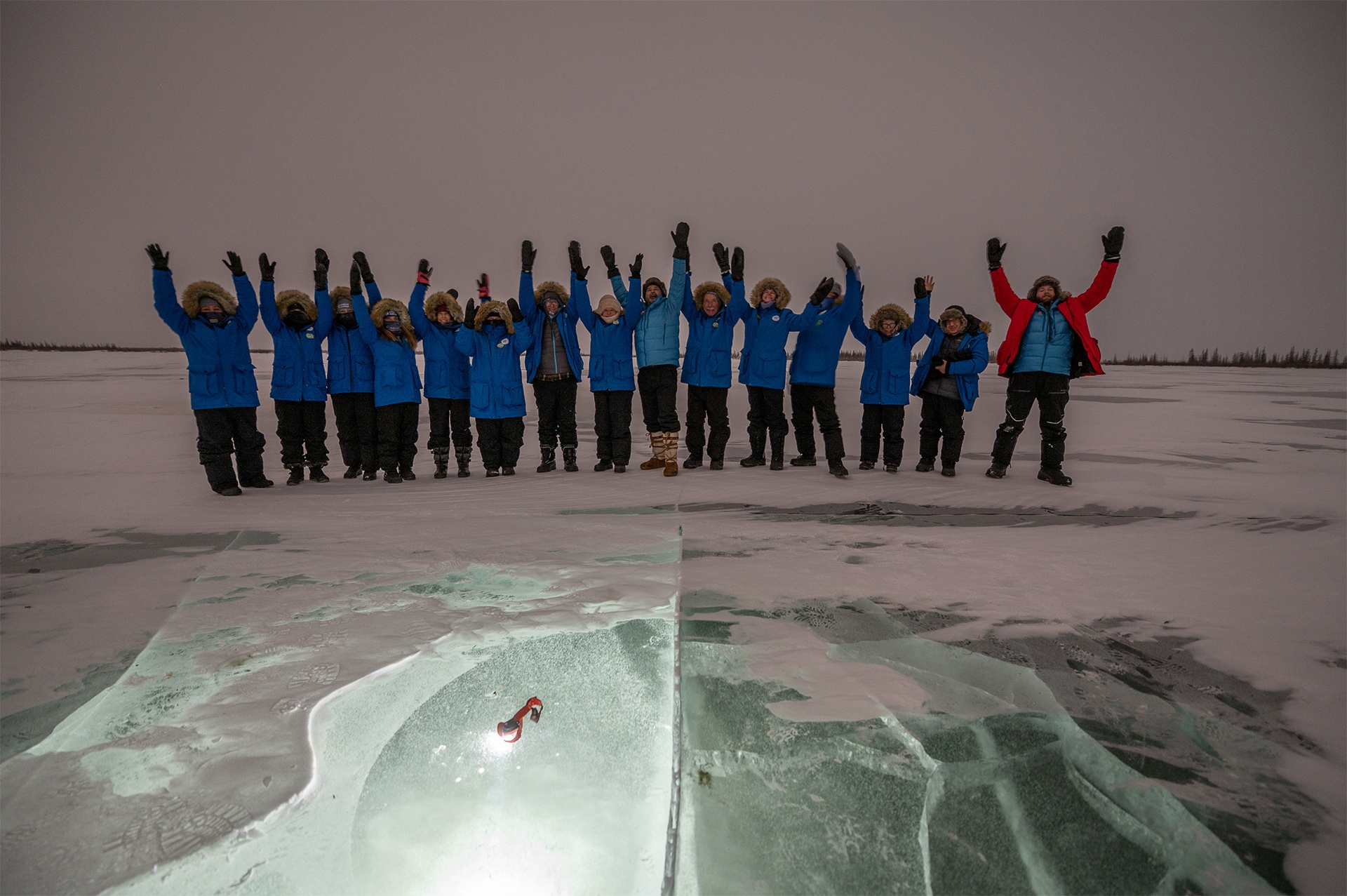
© Eddy Savage
As Court Whelan advises, “A long exposure allows the aurora to paint the sky in brilliant hues,” so make sure to experiment with exposure times to find the perfect balance between capturing the movement of the lights and the stillness of the ice.
Resource: For more ideas and techniques, refer to Nat Hab’s guide: Photographing the Northern Lights.
#3: The Aurora Borealis + Historic Structures in Churchill
Churchill is rich in history, with structures that add a distinct sense of place to your photos. Old cabins, stone structures, and even relics of arctic exploration provide an interesting contrast to the natural beauty of the aurora. Including man-made elements adds storytelling and a sense of human connection to your northern lights photography.
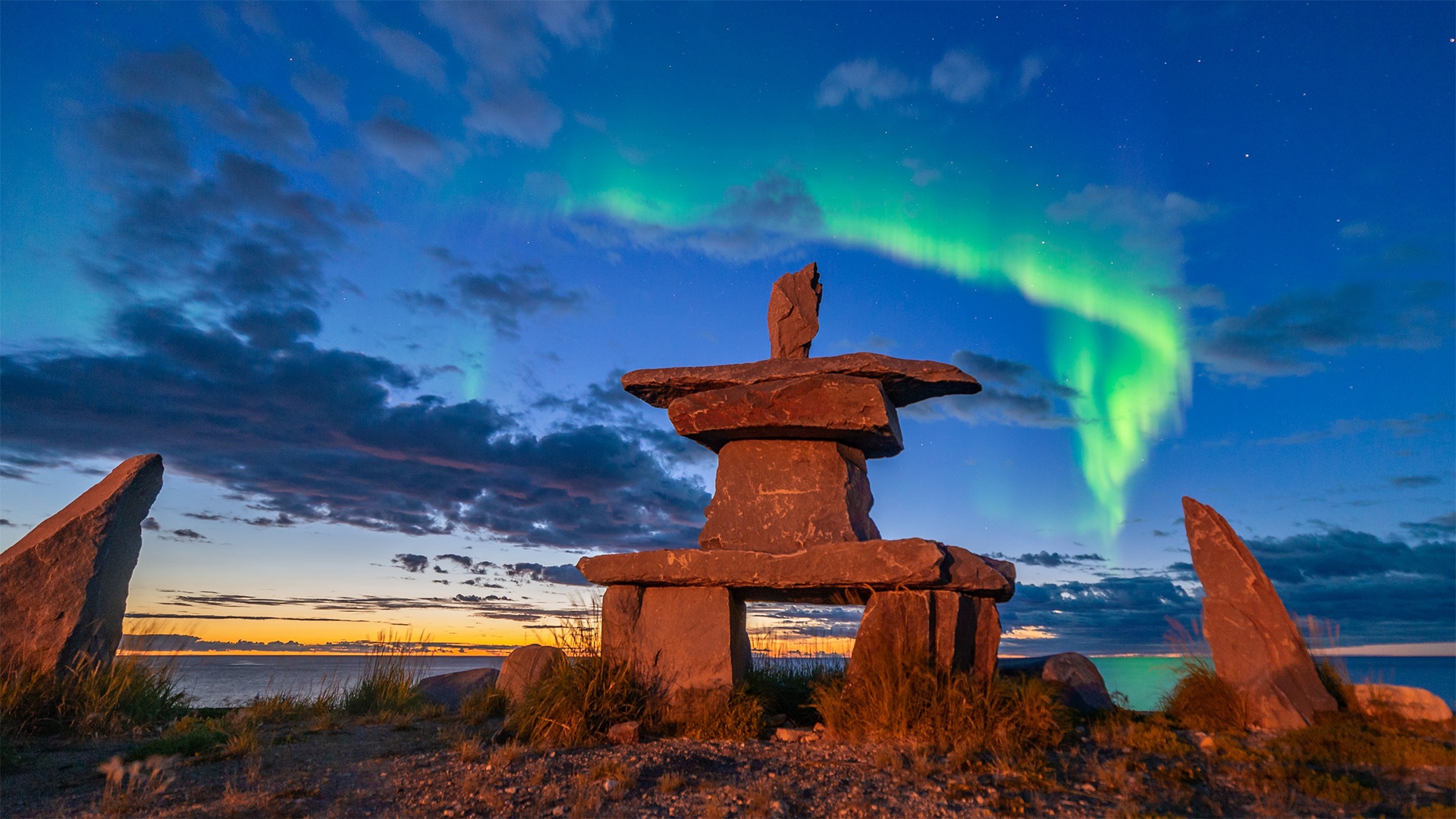
Inuit Inukshuk on the shore of Hudson Bay. Photographed by Nat Hab Expedition Leader © Eddy Savage
For your third iconic shot, capture the northern lights framed by Churchill’s historic structures. The contrast of man-made elements against the wild arctic landscape, illuminated by the shifting colors of the aurora, creates a powerful narrative in your photographs. Whether it’s a weathered cabin or an old arctic vehicle like the Bombardier, these elements bring an authentic, human touch to your aurora images.
Court Whelan emphasizes the value of having clear foreground elements in your northern lights shots: “Having something to focus on in the foreground, like trees or historic structures, makes the photo look crisp and adds a storytelling element.”
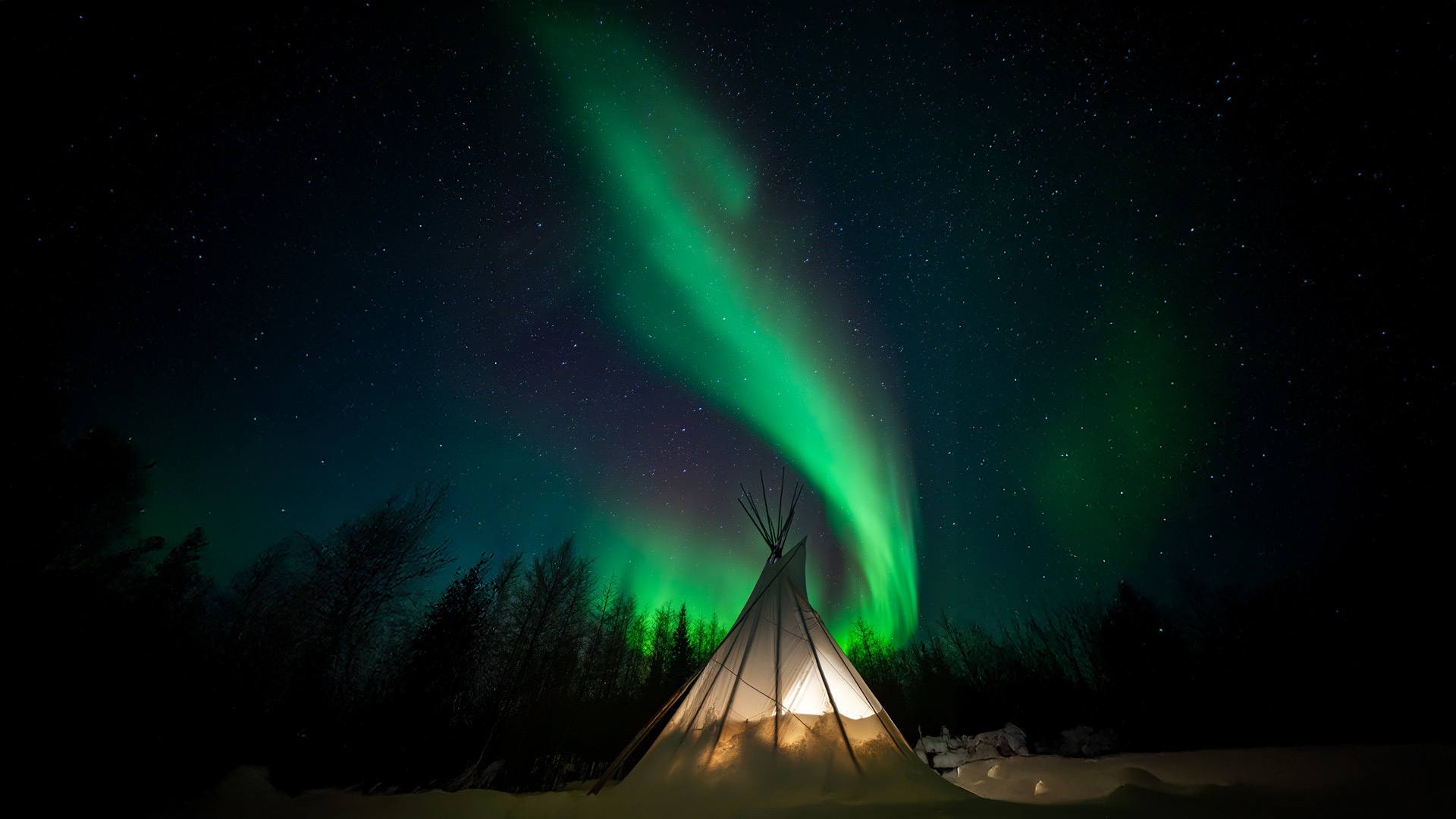
Nat Hab Expedition Leader © Sabina Moll
Tip: Use structures to anchor your images and enhance the composition of your aurora photography.
#4 Wildlife in the Arctic Landscape During the Day
Though the northern lights are the expedition’s main attraction, Churchill’s arctic landscape is also home to a variety of wildlife, including Arctic foxes and snowy owls. These animals offer fantastic photo opportunities during the daytime.

Arctic fox
For your fourth iconic shot, focus on wildlife in the snowy arctic landscape. Capture an Arctic fox against the backdrop of the boreal forest, or photograph a snowy owl perched on a snowbank, with the soft daylight casting a natural glow on the scene. These wildlife images, paired with your nighttime aurora shots, will create a well-rounded collection from your Churchill expedition.
Wide-angle landscape shots that include wildlife as part of the larger scene can emphasize the vastness of the Arctic, while close-up portraits highlight the animals’ unique adaptations to the extreme environment.
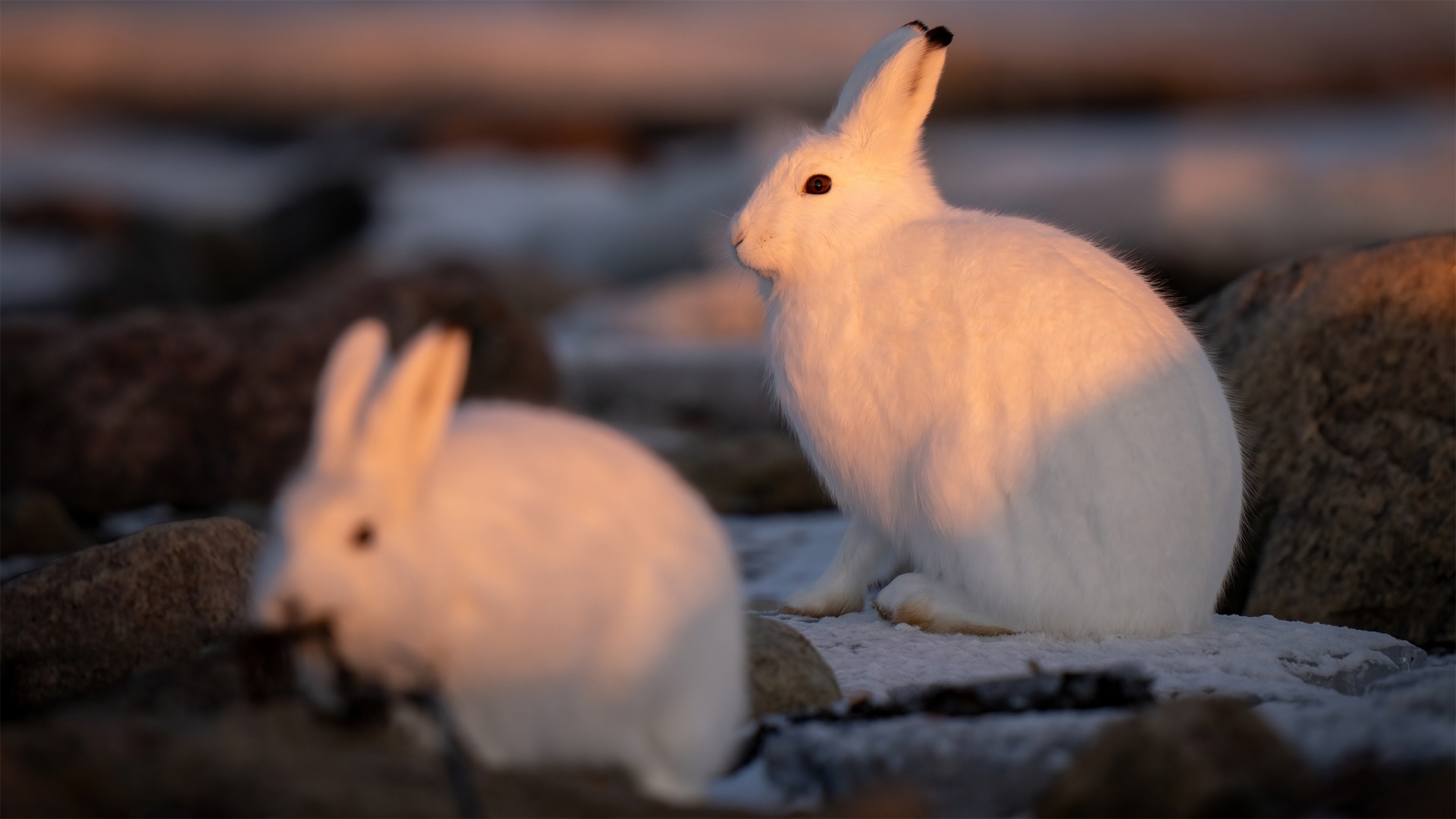
Arctic hare
Resource: Check out Court’s Guide to Capturing “Everything Else” on a Northern Lights Expedition.
#5: The Aurora Borealis from Churchill’s Open Tundra
The open tundra surrounding Churchill offers unobstructed views of the northern lights, making it a great location to capture the full majesty of the aurora. The tundra’s flat, snow-covered expanse provides a dramatic setting for long-exposure photography.
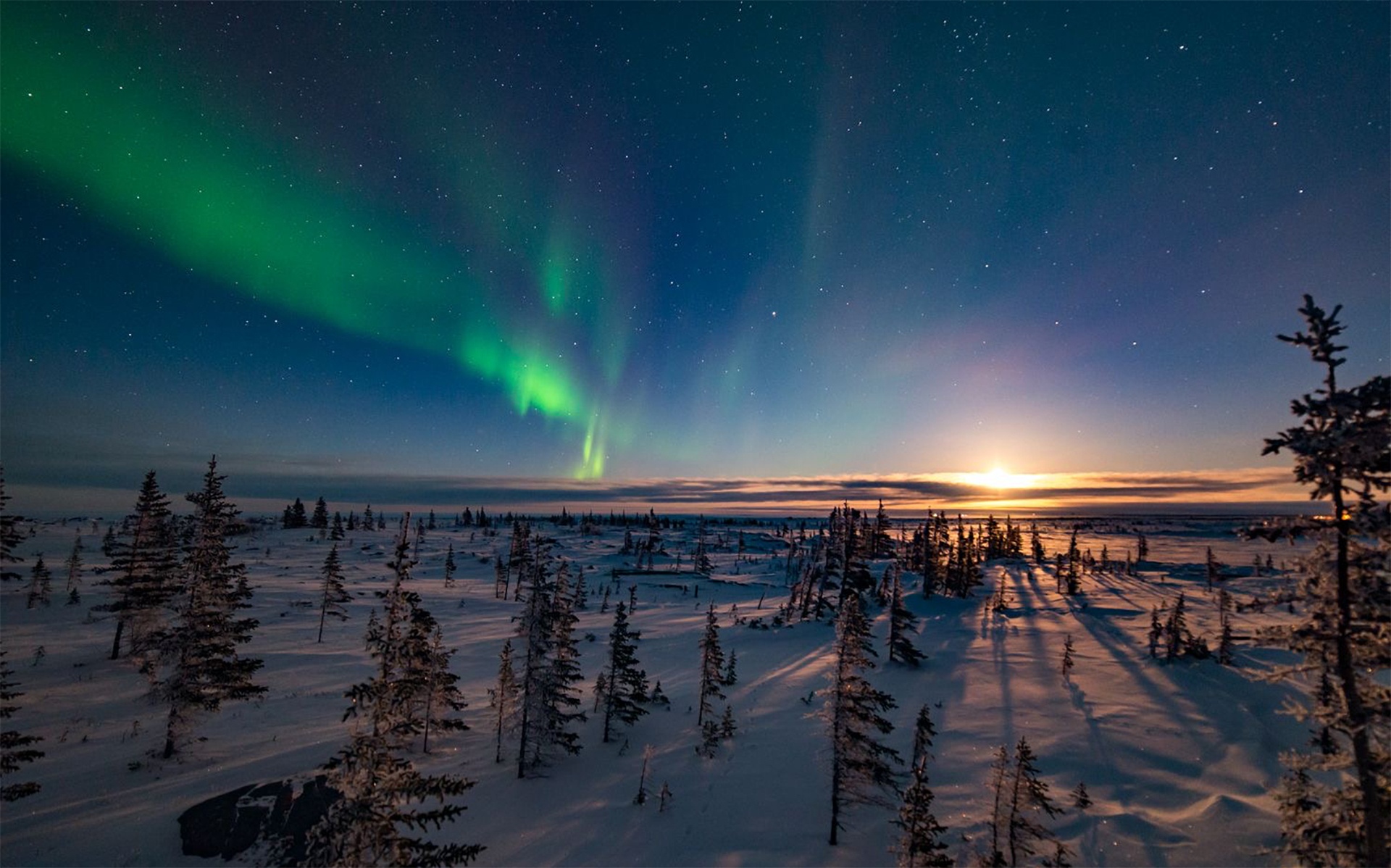
© Eddy Savage
For your fifth iconic shot, focus on the northern lights over Churchill’s wide-open tundra.
Tip: Set up your camera to capture the full scope of the lights dancing across the sky, with the snowy tundra stretching out beneath. The stark, barren landscape emphasizes the isolation and beauty of the aurora, creating a visually stunning and emotionally impactful image.
Court says, “Every second’s a little bit different when shooting the aurora,” so be prepared to capture the lights at different intensities and movements, from serpentine curtains to bright, waving streaks.
Resource: This might be a great time to capture a shot of your group, too. Here’s Court’s tutorial on How to Get a Group Shot in front of the Aurora Borealis.
#6: Light Painting on Historic Arctic Machines Under the Aurora
One unique aspect of the Churchill expedition is the opportunity to incorporate light painting into your northern lights photography. Using a flashlight, you can illuminate foreground elements like historic arctic machines—such as the Bombardier snow vehicle—while capturing the northern lights in the background.
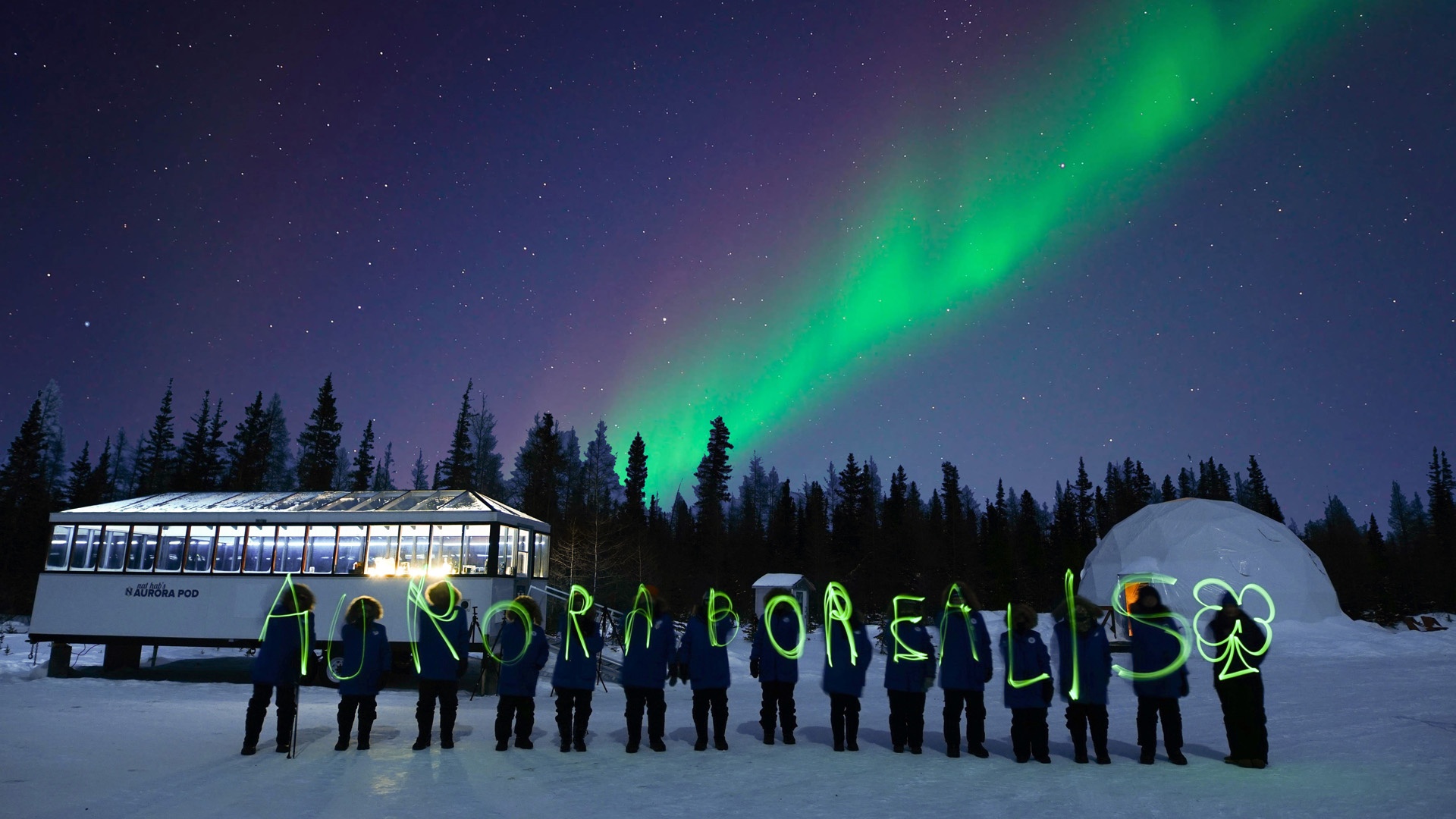
Light painting with our guests! Photographed by Nat Hab Expedition Leader © Petr Gheorghe
For your sixth iconic shot, focus on light painting arctic relics under the northern lights. By briefly illuminating the Bombardier snow vehicle or another historic machine with a flashlight, you can highlight the texture and details of the vehicle without overwhelming the night scene.
The key is to balance the artificial light with the natural glow of the aurora and stars. Court shows how in this video, How to Take Amazing Northern Lights Photos:
Tip: A subtle touch of light can add depth to your photo while maintaining the focus on the northern lights above.
Resource: For more inspiration and advice on photographing the aurora in remote locations, check out Nat Hab’s Northern Lights Video Tutorial.
Capture Iconic Shots on Your Northern Lights Photo Expedition
Churchill, Manitoba, offers a rare and unforgettable opportunity to photograph one of the world’s most awe-inspiring natural phenomena—the northern lights. From the shimmering lights over boreal forests and reflections on the ice to wildlife encounters and historic relics under the aurora, this expedition provides countless opportunities for stunning photography.
With the best viewing typically between November and March, the longer winter nights in Churchill provide a perfect setting for aurora borealisphotography. You’ll be in a region known for its exceptional northern lights displays, far from light pollution, with dedicated nighttime excursions designed to maximize your viewing opportunities.
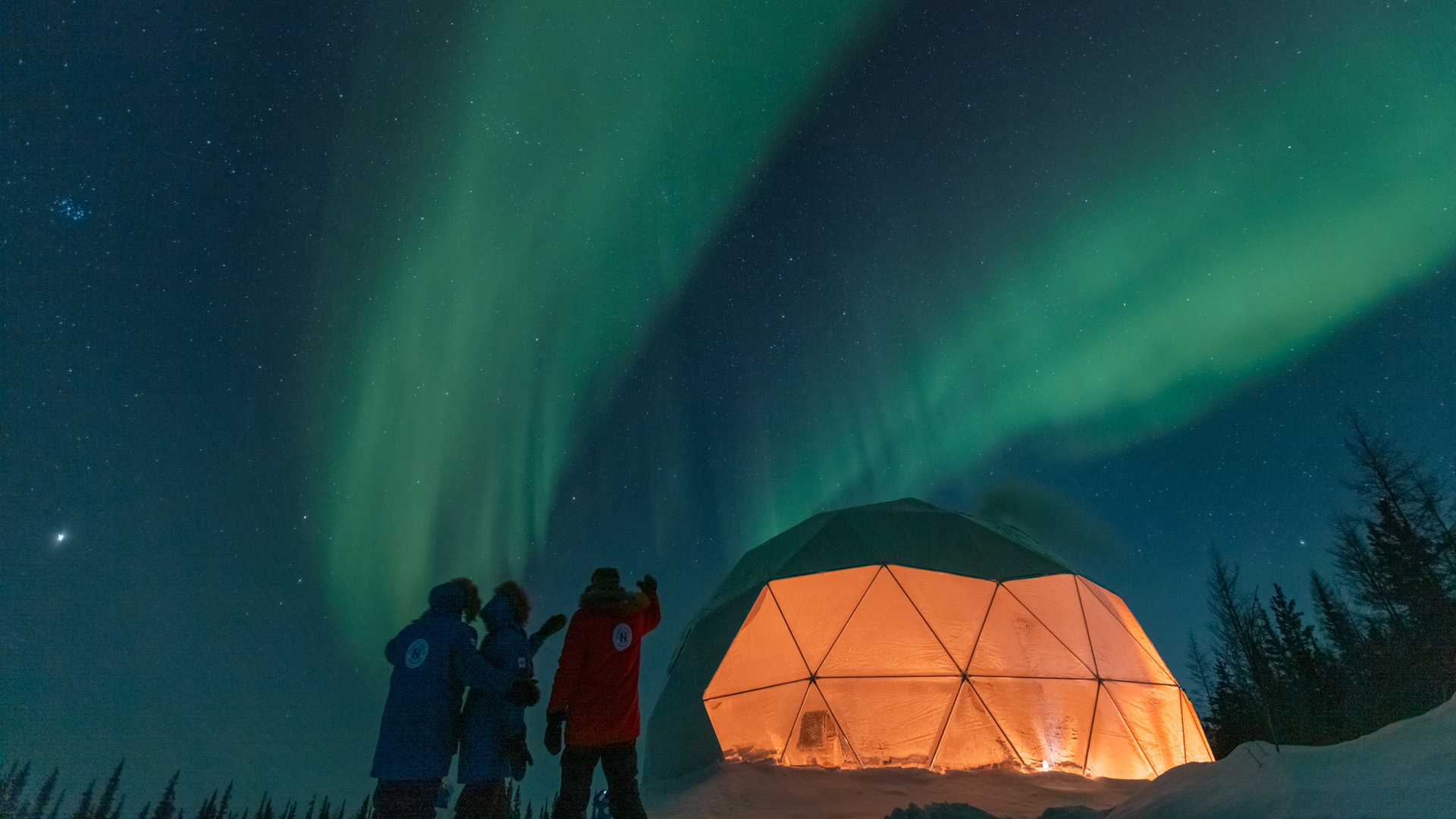
Nat Hab’s Aurora Sphere: one of our custom Northern Lights Viewing Locations. Photographed by Nat Hab Expedition Leader © Giulia Ciampini
Resources for Winter Travel to the Aurora Oval
To prepare for your winter arctic journey, explore
- Nat Hab’s Videos & Webinars page for additional tips and techniques.
- Nat Hab Expedition Leader Eddy Savage shares tips for what to bring in Preparing for Photographing the Northern Lights.
- Here’s a more complete Know Before You Go guide
For further insights into Churchill and the Arctic region, explore WWF’s resources:

Nat Hab guests inside our custom Aurora Dome © Alexander de Vries
The post 6 Iconic Northern Lights Photos to Capture in Churchill, Manitoba first appeared on Good Nature Travel Blog.